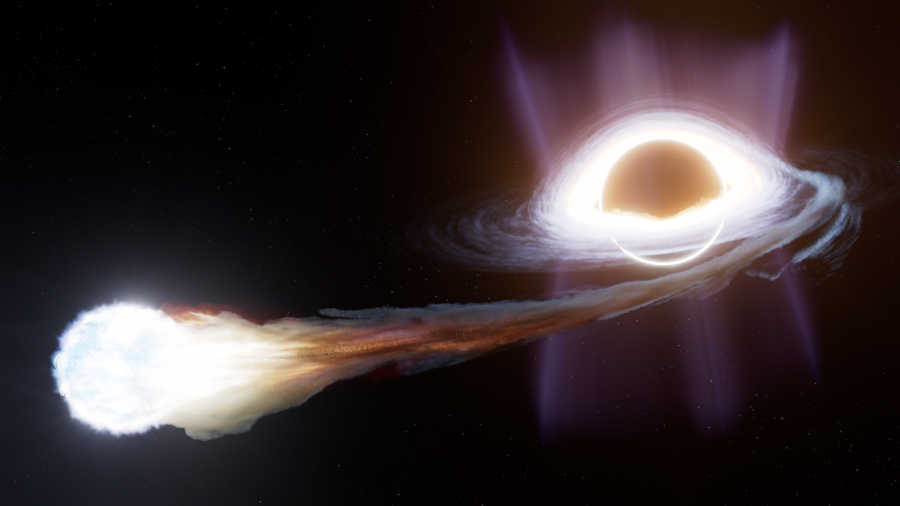Reviewed by Lexie CornerMay 10 2024
A recent study, led by Professor Jane Lixin Dai's research group at the Department of Physics, The University of Hong Kong (HKU), has unveiled a pioneering technique for detecting Population III (Pop III) stars, the earliest generation of stars that have eluded direct observation until now. The research was published in the journal Astrophysical Journal Letters.
 HKU Astrophysicists Discover a Novel Method for Hunting the First Stars. Image Credit: Space Telescope Science Institute/Ralf Crawford
HKU Astrophysicists Discover a Novel Method for Hunting the First Stars. Image Credit: Space Telescope Science Institute/Ralf Crawford
The Space Telescope Science Institute, which manages multiple NASA telescopes, has highlighted the research, which has received widespread recognition from the global astronomy community.
These possible findings about Pop III stars can shed light on the universe's origins and help us better understand the amazing journey the cosmos underwent to become the planet humans live on.
The earliest stars were primarily made of hydrogen and helium and formed soon after the Big Bang, which marked the beginning of the Universe. Pop III stars have characteristics that set them apart from stars like the sun and even stars developing now.
They were enormously massive, extremely hot, and had a very short lifespan. The majority of the elements heavier than hydrogen and helium that surround humans today were first synthesized by Pop III stars. They are also crucial for the formation of stars and galaxies in subsequent generations.
However, Pop III stars formed in the early cosmos and have yet to be conclusively seen directly because they are too faint and too far apart for any ground-based or space-based telescopes.
HKU researchers have found a unique technique for finding these initial stars in the early Universe for the first time. According to a new study conducted by Professor Jane Lixin Dai's research group at the Department of Physics at HKU, a Pop III star that happens to stray too close to a big black hole may be ripped to shreds by tidal force.
A black hole in such a tidal disruption event (TDE) gorges on the star debris and bursts into extremely bright flares. The scientists looked into the intricate scientific mechanism at play and showed that solar flares can travel billions of light years to reach the planet today. Most significantly, they have discovered that Pop III stars can be identified, and their characteristics can be understood, thanks to the distinct signals of these TDE flares.
As the energetic photons travel from a very faraway distance, the timescale of the flare will be stretched due to the expansion of the Universe. These TDE flares will rise and decay over a very long period of time, which sets them apart from the TDEs of solar-type stars in the nearby Universe.
Jane Dai, Professor, Principal Investigator and Study Corresponding Author, The University of Hong Kong
Dr. Rudrani Kar Chowdhury, the first author of the study, said, “Interestingly, not only are the timescales of the flares are stretched, so is their wavelength. The optical and ultraviolet light emitted by the TDE will be transferred to infrared emissions when reaching the Earth.”
Chowdhury is also a Postdoctoral Fellow of the Department of Physics at the University of Hong Kong.
The fact that two NASA flagship missions, the soon-to-launch James Webb Space Telescope (JWST) and the soon-to-be Nancy Grace Roman Space Telescope (Roman), can detect these infrared emissions at long ranges adds even more excitement to the discovery.
Roman’s unique capabilities of simultaneously being able to observe a large area of the sky and peeking deep into early Universe makes it a promising probe for detecting these Pop III TDE flares, which would, in turn, serve as an indirect discovery of Pop III stars.
Priya Natarajan, Professor and Study Co-Author, Department of Astronomy and Physics, Yale University
Ms Janet Chang, a Ph.D. student at HKU and Study Co-Author, added, “We expect that a few dozens of these events will be detected by Roman every year if the right observation strategy is pursued.”
In light of these discoveries, the next ten years offer a great deal of promise for locating these unique sources, which could result in fascinating new insights into Pop III stars and the answers to the universe's origins.
Journal Reference:
Chowdhury, R, K., et al. (2024) Detecting Population III Stars through Tidal Disruption Events in the Era of JWST and Roman. The Astrophysical Journal Letters. doi.org/10.3847/2041-8213/ad41b7.